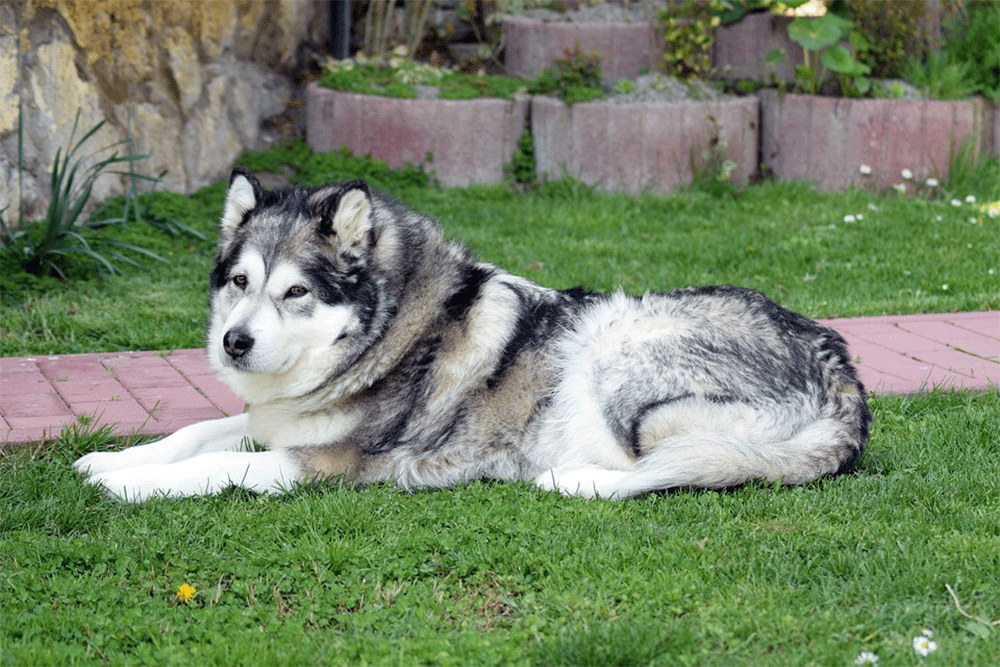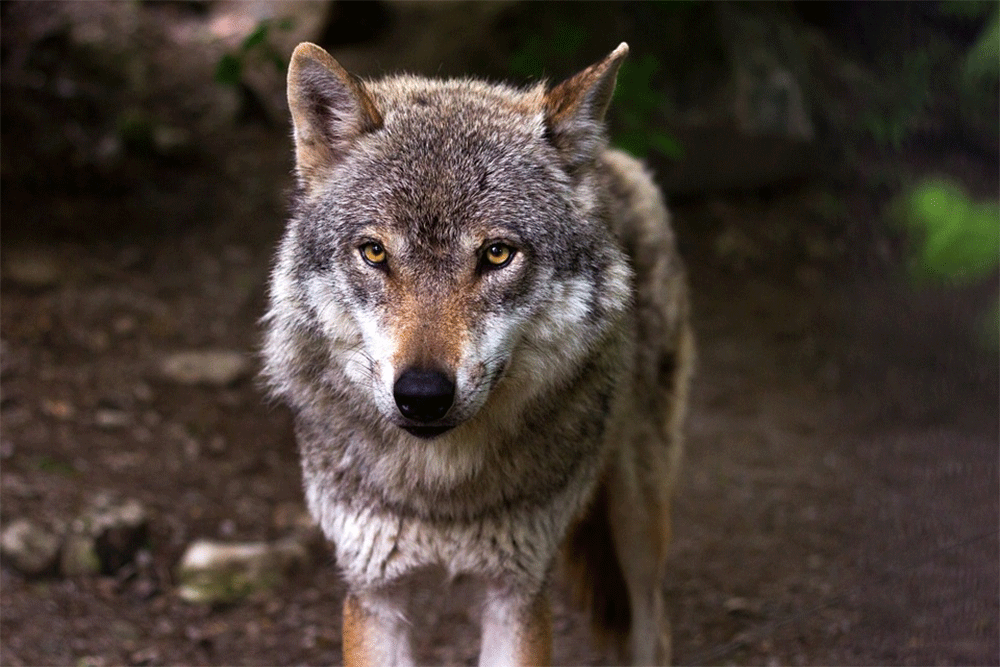In a one on one fight, an Alaskan Malamute could kill a wolf. However, it’s unlikely the Malamute would walk away unscathed. Similarly, a wolf would be quite capable of killing a Malamute.
The major advantage a wolf has is the pack. While a single wolf may be defeated by a Malamute, a pack would win every time. Wolves are very rarely without their pack, even if you can’t see them nearby. If a Malamute attacked a single wolf, the pack would likely descend quickly.

The motivation behind the attack would also play a part. If the wolf is hunting for food, then an Alaskan Malamute will fight to protect its family or pack. In this case, the Malamute would have the edge. However, if the wolf felt it had to protect its pack against a Malamute, it would be fighting to the death.
Especially if there are young involved. The wolf would have an advantage here. And of course, if a Malamute attacked to defend its pack, the wolf pack would react the same way.
Another advantage of the wolf is experience. An Alaskan Malamute has been domesticated, and its first instinct will be to raise the alarm when danger is nearby, rather than attack. If the Malamute is drawn into a fight with a wolf, then it might be the first real fight it’s ever had. The Malamute would have to rely on instinct, where the wolf can draw from experience.
However, a wolf doesn’t often kill with a quick blow. A wolf hunts in a pack, and picks off the weak and vulnerable. Often, the prey animal will die from shock or sustained injuries. This may give the Malamute an advantage in a one on one fight.
An Alaskan Malamute could potentially kill a wolf. However, the wolf has many advantages. Primarily, a wolf would generally be part of a pack, and an Alaskan Malamute would struggle to defend itself against a wolf pack.
Are Malamutes part wolf?
Malamutes have many wolf-like traits, but they aren’t part wolf. Like all dogs, the Malamute is a descendant of wolf ancestors. Over time, fewer of the wolf characteristics have been bred out of the Malamute, which is what gives them their wolf appearance.
The Alaskan Malamute is an ancient breed, which may explain the prominence of wolf characteristics. The Malamute would likely have been bred between sled dogs and wolves. However, this interbreeding would have been historical, and it doesn’t make them part wolf. It does indicate that their appearance has remained relatively unchanged for centuries.
Malamutes are definitely similar to wolves in appearance, which is where the mistake often comes from. In fact, Malamutes are often chosen to play wolves in films and television series.
There are several physical similarities that lead to the Malamute being mistaken for a wolf. To begin with, they have similar facial markings, and the same pointy ears. They even have the same intelligent eyes. The coloring of Malamutes and wolves is also similar. Malamutes are most often bred with gray coats, but they can be red, black, white, and wolf sable.
In terms of build, wolves are taller and leaner. A wolf is a wild animal, so its weight comes from lean muscle. Malamutes, on the other hand, have been domesticated. They may weigh similar to the wolf, but as they don’t have to hunt for prey they don’t require the same streamlined speed. Malamutes were partly bred to be sled dogs, so their weight is distributed for bulk and stamina. Side by side, the standard wolf is taller and thinner than a Malamute.
Outside of appearance, they have similar pack instinct and prey drive. The major difference is Malamutes can see humans as part of the pack. A wolf won’t react the same way.
From a distance, it’s easy to mistake a Malamute for a wolf. Especially as Malamutes communicate with howls very similar to a wolf call. However, Malamutes aren’t part wolf, they were just bred to retain many of the same characteristics.
Is a husky a wolf?

A Husky may look very much like a wolf, but they are different animals. Siberian Huskies are physically close to a wolf, but they only share the same common ancestor as other dog breeds do.
The Siberian Husky was originally bred in frozen Siberia to act as sled dogs. This meant they needed to be powerful, with a great deal of stamina. For this reason, they retained many of the wolf characteristics. The DNA of the Husky has also been traced to show it’s an old breed.
Due to the isolated nature of the Huskies original home, there was little diversity for crossbreeding. In fact, the Husky was a rarely known dog up until the Twentieth Century, when they were used in the All Alaska Sweepstakes, bringing them to the public attention. They cemented their popularity in 1925, when Husky sled dogs pulling antidotes saved many lives after a Diphtheria outbreak in Alaska.
Another cause for confusion is the role that Huskies have played in the public eye over the years. Huskies are often used in television shows and films to portray wolves. Because of this, sometimes what people think of as ‘wolf’ is actually Husky.
Despite the physical similarities, the temperaments of the average Husky and wolf are incredibly different. Huskies make good companions and loyal pets, where a wolf can’t be domesticated.
Occasionally, a Husky will be crossbred with a wolf. These puppies are Wolfdogs, and some consider them desirable pets. However, there’s a lot still not understood about Wolfdogs, and they can have dangerous temperaments.
A Siberian Husky is a purebred dog, and it is all dog. The similarities to wolves is purely from selective breeding, and there is no recent ancestral link. Across the centuries, the wolf-like features of a Husky both served a purpose, and had limited opportunities for diversification due to relative isolation. This can explain why the modern Husky still so closely resembles a wolf.
